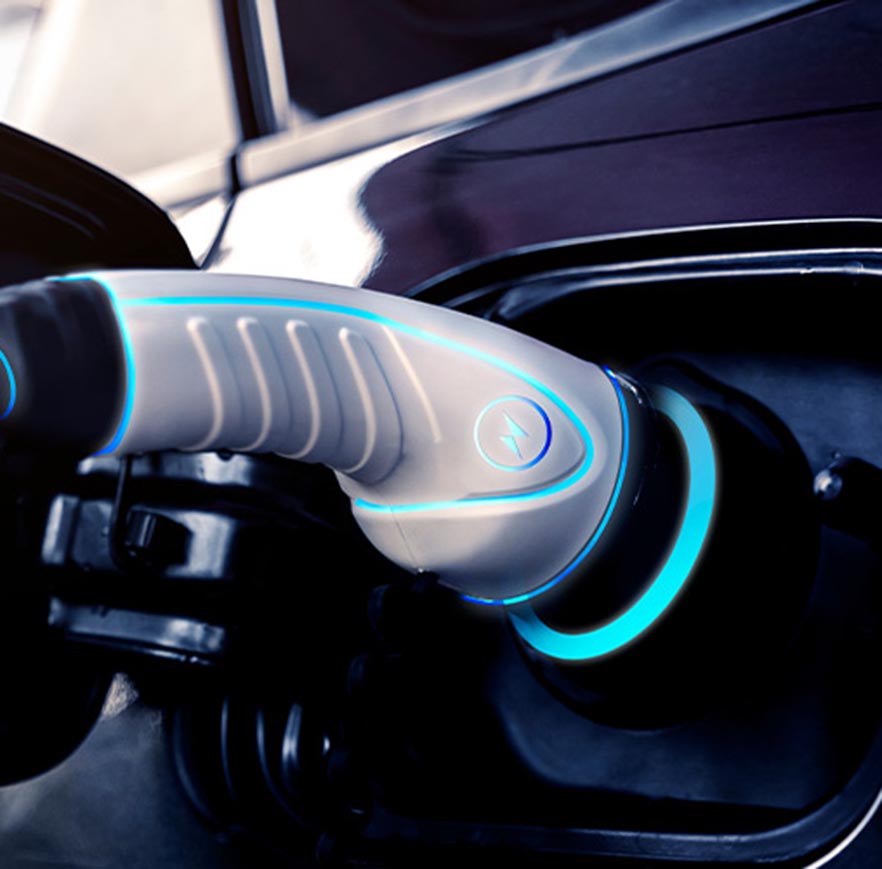The automotive landscape is undergoing a seismic shift, with the buzz of electric vehicles (EVs) reverberating through the industry. This seismic change isn’t merely about transportation; it represents a paradigm shift towards sustainable mobility. The journey of electric vehicles from novelty to mainstream choice has been nothing short of remarkable, propelled by technological innovations, environmental consciousness, and an evolving consumer mindset.
The roots of electric vehicles trace back to the 19th century when inventors tinkered with early prototypes. Yet, it’s only in recent years that these vehicles have gained substantial ground. Advancements in battery technology, a linchpin in the EV revolution, have transformed the viability and appeal of electric cars. The introduction of lithium-ion batteries revolutionized the game, extending the driving range, enhancing efficiency, and gradually closing the gap in affordability between electric and conventional vehicles.
The catalysts behind this burgeoning electric revolution are manifold. Environmental concerns, particularly regarding escalating carbon emissions and their impact on climate change, have propelled the urgency for cleaner transportation alternatives. Governments, corporations, and consumers are increasingly recognizing the imperative to pivot towards eco-friendly mobility solutions.
Companies like Tesla, the trailblazer in this domain, have redefined the possibilities of electric cars, demonstrating that they can be more than just an environmentally conscious choice—they can be sleek, powerful, and technologically advanced. The convergence of electric vehicles with advancements in autonomous driving, connectivity, and energy efficiency paints a compelling picture of the future of transportation.
However, this shift isn’t without its challenges. Range anxiety, charging infrastructure, and the cost of batteries remain pivotal obstacles hindering the widespread adoption of electric vehicles. Overcoming these hurdles demands collaborative efforts from stakeholders across industries and governments.
Yet, amidst these challenges lie boundless opportunities. The global push towards electric mobility is reshaping industries, sparking innovation, and redefining economic landscapes. It’s not just about the cars we drive; it’s about recalibrating our relationship with energy, transportation, and the environment.
The journey towards an electric future is teeming with potential—a future where sustainability, innovation, and mobility coalesce into a harmonious stride towards progress. Join us on this expedition as we delve deeper into the electric revolution, exploring its implications, possibilities, and the transformative journey ahead.
The Evolution of Electric Vehicles
The inception of electric vehicles can be traced back to the 19th century when inventors first conceptualized and experimented with early electric-powered automobiles. However, it’s the amalgamation of technological breakthroughs, environmental imperatives, and shifting consumer preferences in recent years that has propelled electric vehicles into the mainstream.
At the heart of this transformation lies the relentless pursuit of advancements in battery technology. The evolution of batteries has been the linchpin in revolutionizing electric vehicles, addressing critical concerns regarding their efficiency, range, and affordability. Among these innovations, lithium-ion batteries have emerged as a game-changer, heralding a new era in the electric vehicle landscape. Their superior energy density, longer life cycles, and faster charging capabilities have been pivotal in fostering the widespread adoption of EVs.
Companies such as Tesla, a trailblazer in the industry, have not only demonstrated the viability of electric vehicles but also reshaped perceptions about their capabilities. Their innovative approach to design, engineering, and battery technology has set new benchmarks for performance, range, and overall driving experience. This has compelled traditional automakers like Nissan and Chevrolet to follow suit, introducing their own electric vehicle models that rival their gasoline-powered counterparts in both performance and aesthetics.
The allure of zero-emission driving stands as a compelling factor driving the surge in consumer interest in electric vehicles. The promise of reduced carbon footprints and lower operational costs compared to conventional vehicles has been instrumental in fostering a growing preference for EVs among environmentally conscious consumers.
Moreover, the continuous efforts to expand charging infrastructure globally have played a pivotal role in alleviating ‘range anxiety,’ a primary concern for potential EV buyers. The proliferation of charging stations in urban centers, along highways, and at workplaces has contributed significantly to the convenience and practicality of owning an electric vehicle.
The collective efforts of industry leaders, coupled with government incentives and growing environmental awareness, have accelerated the integration of electric vehicles into the mainstream automotive market. This not only signifies a technological revolution but also a fundamental shift in how society views and embraces sustainable transportation solutions.
The trajectory of electric vehicles, from niche alternatives to formidable contenders in the automotive industry, underscores the transformative power of innovation, environmental consciousness, and consumer demand. As the march towards sustainable mobility continues, the stage is set for an electrifying future where electric vehicles stand at the forefront of transportation evolution.

Environmental Impact and the Sustainable Promise of Electric Vehicles
The environmental implications of traditional internal combustion engine vehicles are substantial, contributing significantly to air pollution and greenhouse gas emissions. This dire scenario has prompted a pivotal shift towards embracing electric vehicles as a solution to mitigate environmental degradation.
Electric vehicles stand out as a beacon of hope in the fight against climate change due to their fundamental design. Unlike their fossil fuel counterparts, EVs operate primarily on electricity, resulting in zero tailpipe emissions. By eliminating exhaust emissions from the equation, electric vehicles play a pivotal role in reducing air pollution and decreasing greenhouse gas emissions, thereby mitigating the adverse effects of climate change.
The shift towards electric cars not only addresses immediate concerns related to air quality but also aids in the long-term goal of reducing carbon footprints. This is especially pertinent as the global community endeavors to meet ambitious carbon reduction targets outlined in various environmental accords.
Furthermore, the integration of renewable energy sources in conjunction with electric vehicles amplifies their eco-friendly profile. Charging stations powered by solar panels or wind turbines complement the green ethos of EVs, ensuring that the electricity used for charging comes from sustainable and clean sources. This synergy reinforces the environmentally friendly narrative associated with electric vehicles, minimizing reliance on fossil fuels throughout the vehicle lifecycle.
Governments worldwide recognize the pivotal role of electric vehicles in achieving sustainable transportation. To incentivize and accelerate the adoption of EVs, governments offer a range of incentives such as subsidies, tax credits, and grants to both manufacturers and consumers. These incentives aim to make electric vehicles more accessible and economical, thereby encouraging a transition towards greener modes of transportation.
Moreover, governments are actively investing in the development of charging infrastructure to alleviate concerns about range limitations and charging accessibility. By strategically deploying charging stations in urban areas, along highways, and in public spaces, authorities aim to create a robust charging network that supports the seamless integration of electric vehicles into everyday life.
The collective commitment towards sustainable transportation through the promotion of electric vehicles signifies a paradigm shift towards a more eco-conscious and environmentally sustainable future. It’s not merely about reinventing the way we commute; it’s a concerted effort towards safeguarding the planet for future generations.
The convergence of technological innovation, environmental awareness, and policy initiatives underscores the transformative potential of electric vehicles in paving the way towards a cleaner, greener, and more sustainable world.
Technological Innovations in Electric Vehicles
The relentless pursuit of innovation within the realm of electric vehicles (EVs) has sparked a technological revolution, reshaping the driving experience and transforming the automotive landscape. Several key advancements stand out as pillars driving this evolution:
Autonomous Driving Technology
Advancements in autonomous driving technology have taken center stage in the development of electric vehicles. Companies are investing heavily in AI-driven systems, sensors, and algorithms to enable vehicles to navigate and make decisions without human intervention. This transformative technology promises enhanced safety, increased efficiency, and the potential for a paradigm shift in transportation.
Connectivity Features
EVs are not just vehicles; they are becoming integrated ecosystems of connectivity. Seamless integration with smartphones, cloud-based services, and IoT (Internet of Things) devices within the vehicle enables real-time data sharing, remote monitoring, and enhanced user experiences. This connectivity offers functionalities such as remote vehicle control, predictive maintenance alerts, and personalized in-car entertainment, redefining the relationship between cars and their users.
Energy Efficiency
Continuous improvements in energy efficiency are crucial for the sustainable proliferation of electric vehicles. Innovations in power electronics, regenerative braking systems, and aerodynamics contribute to maximizing the mileage per charge. Efforts to optimize energy usage and minimize wastage are pivotal in extending the range of electric vehicles and enhancing their overall efficiency.
Enhanced Safety Systems
Electric vehicles are at the forefront of integrating cutting-edge safety features. Advanced driver-assistance systems (ADAS), collision detection, automatic emergency braking, and pedestrian detection technologies are becoming standard, elevating safety standards and reducing the risk of accidents on the road.
Over-the-Air Updates
The introduction of over-the-air (OTA) updates is transforming the way vehicles receive software upgrades. Similar to smartphones, EV manufacturers can remotely update vehicle software to enhance performance, introduce new features, and address security vulnerabilities without the need for physical visits to service centers.
Persistent Challenges
Despite the remarkable progress, challenges continue to shape the landscape of electric vehicles:
Range Anxiety
Range anxiety remains a significant concern for potential EV buyers. The fear of running out of battery charge before reaching a charging station hampers widespread adoption. To alleviate this concern, substantial advancements in battery technology are imperative. Innovations focusing on increasing energy density, reducing charging times, and extending the range of EVs are essential to mitigate range anxiety.
Charging Infrastructure
The establishment of a robust and extensive charging infrastructure is pivotal for the mass adoption of electric vehicles. Governments, along with private entities, need to invest in deploying charging stations across urban areas, highways, workplaces, and residential areas to ensure convenient and accessible charging options for EV owners.
The technological innovations driving electric vehicles signify an era of transformative possibilities in transportation. However, overcoming challenges such as range anxiety and building a comprehensive charging infrastructure are critical milestones on the road to widespread adoption. As innovation continues to surge forward, addressing these challenges will pave the way for a future where electric vehicles are not just a choice but the norm in sustainable and efficient mobility.
Global Impact of the Electric Vehicle Revolution
The advent of the electric vehicle (EV) revolution is not confined to a particular region or market; it reverberates across borders, reshaping industries, economies, and energy landscapes on a global scale. The ambitious shift from internal combustion engine vehicles (ICEVs) to electric mobility has sparked transformative changes and set forth a trajectory for a sustainable future.
National Targets and Ambitions
Governments worldwide are setting ambitious targets and policies to accelerate the transition towards electric mobility. These initiatives aim to phase out ICEVs and promote the adoption of electric vehicles within the next few decades. Countries are introducing stringent emissions regulations, offering incentives for EV purchases, investing in charging infrastructure, and fostering research and development in battery technology to expedite this transition.
Economic Opportunities
The transition to electric vehicles presents a myriad of economic opportunities. As the automotive industry undergoes a paradigm shift, it creates new prospects for job creation across various sectors. The burgeoning demand for electric vehicles fuels a demand for skilled workers in manufacturing, engineering, software development, and renewable energy sectors. Simultaneously, it spurs investments in research and development, driving innovation and technological advancements in the electric vehicle ecosystem.
Reshaping Energy Grids
The integration of electric vehicles with smart grid systems represents a pivotal development in the energy sector. Electric cars are not merely consumers of electricity but potential contributors to a dynamic energy ecosystem. Through vehicle-to-grid (V2G) and vehicle-to-home (V2H) technologies, EVs can store excess energy and discharge it back to the grid or power homes during peak demand periods. This bidirectional flow of energy holds the promise of balancing demand, reducing strain on the grid, and maximizing the utilization of renewable energy sources.
Synergy with Renewable Energy
The synergy between electric vehicles and renewable energy sources presents a compelling opportunity for a more sustainable energy ecosystem. The increasing adoption of EVs, coupled with renewable energy integration, offers a unique solution to the intermittency challenge faced by renewables. Solar and wind power can charge EVs, while EV batteries can serve as storage units for surplus energy generated from renewable sources. This symbiotic relationship not only enhances grid stability but also fosters a more resilient and efficient energy infrastructure.

A Transformative Journey Ahead
The global impact of the electric vehicle revolution extends beyond transportation—it’s a catalyst for multifaceted changes across economies, industries, and energy systems. Embracing electric mobility not only mitigates environmental concerns but also stimulates economic growth, fosters innovation, and redefines the way societies perceive and utilize energy.
As countries and industries align their strategies towards a sustainable future, the integration of electric vehicles into the fabric of daily life represents a pivotal step towards building a cleaner, smarter, and more sustainable world.
The Electrifying Future of Transportation
The trajectory of electric vehicles represents a compelling narrative of innovation, sustainability, and transformative change in the landscape of transportation. This electric revolution isn’t merely a trend; it marks a monumental shift with far-reaching implications for our future.
Exponential Growth Driven by Innovation
The growth of electric vehicles is on an exponential trajectory, fueled by relentless innovation in technology and design. Advancements in battery technology, autonomous driving, connectivity, and energy efficiency are revolutionizing the automotive industry, propelling electric cars into the spotlight as formidable contenders to traditional internal combustion engine vehicles.
Environmental Imperatives and Sustainable Mobility
At the core of the electric vehicle surge lie environmental imperatives. The transition from fossil fuel-powered vehicles to electric mobility presents a solution to mitigate climate change and reduce carbon footprints. This transformation embodies a collective commitment to fostering a cleaner, greener future, aligning with global sustainability goals and driving towards a more environmentally conscious transportation paradigm.
Collaboration Shapes the Future
The evolution and success of electric vehicles hinge upon the collaboration of diverse stakeholders. Manufacturers pushing the boundaries of innovation, policymakers crafting supportive regulations and incentives, and consumers embracing and demanding sustainable alternatives—all play integral roles in shaping the future of electric mobility. This collective effort is pivotal in ensuring the widespread adoption and success of electric vehicles.
Pioneering a Cleaner, Efficient Future
In conclusion, the prospects for electric vehicles are unequivocally promising. The convergence of innovation and sustainability propels us towards a future where transportation is not just a means of movement but a catalyst for positive change. Electric vehicles epitomize this transformative journey—a testament to human ingenuity and commitment to creating a cleaner, more efficient mode of transportation.
As the industry continues to evolve, each step forward in technology, infrastructure development, and consumer adoption reaffirms the potential for electric vehicles to become the norm—a symbol of progress towards a sustainable and thriving future for generations to come.
The electric vehicle revolution isn’t just a revolution in transportation; it’s a revolution for a better tomorrow.





